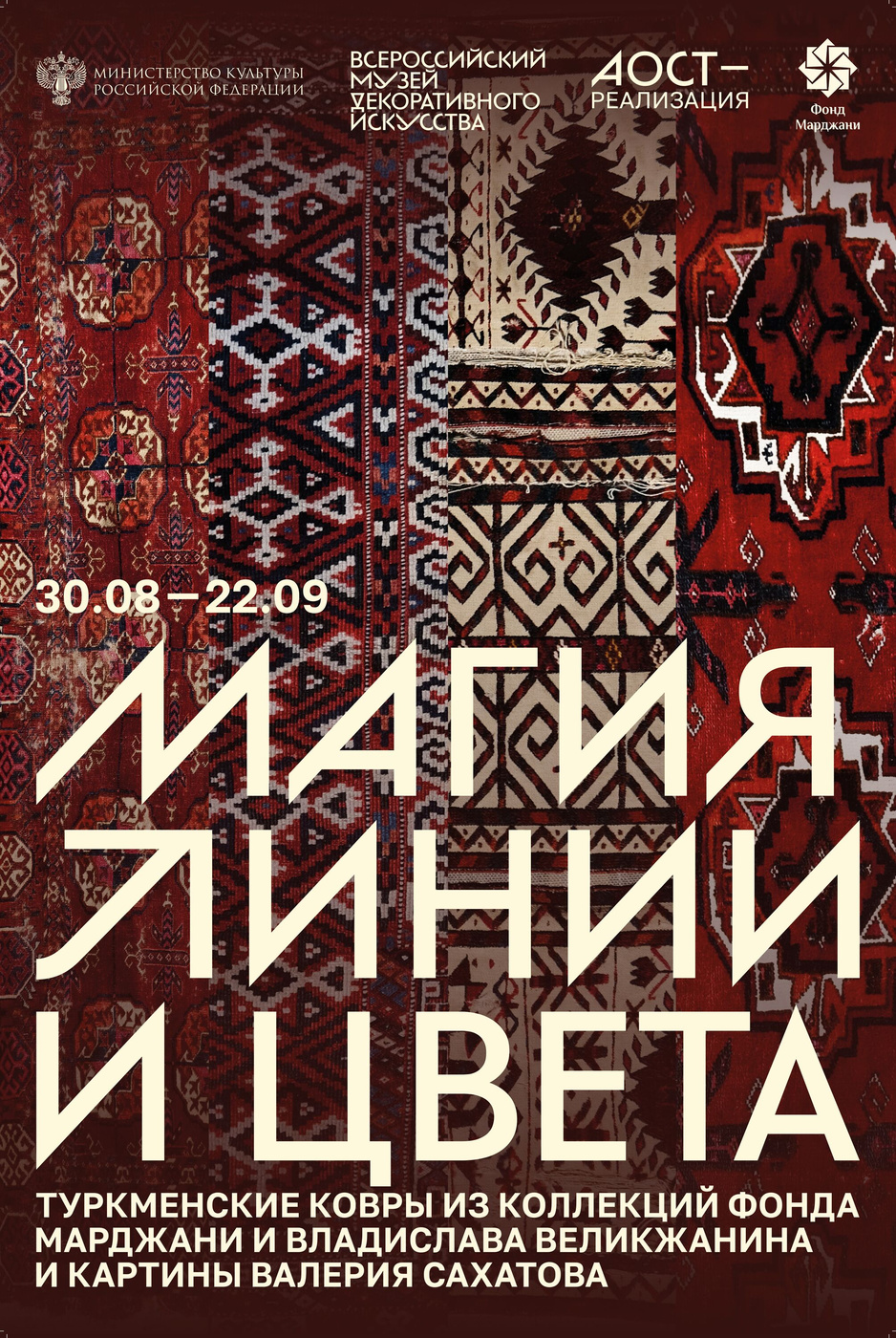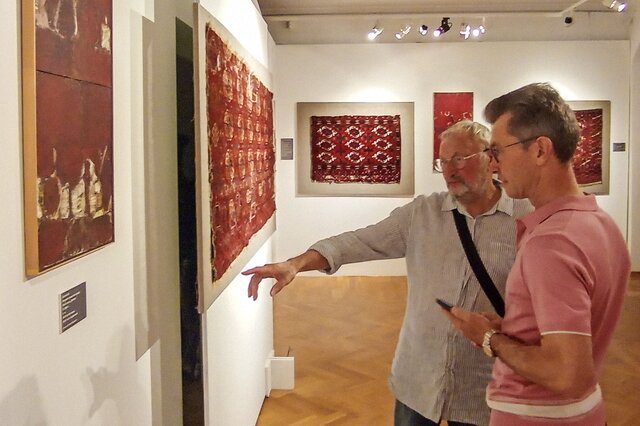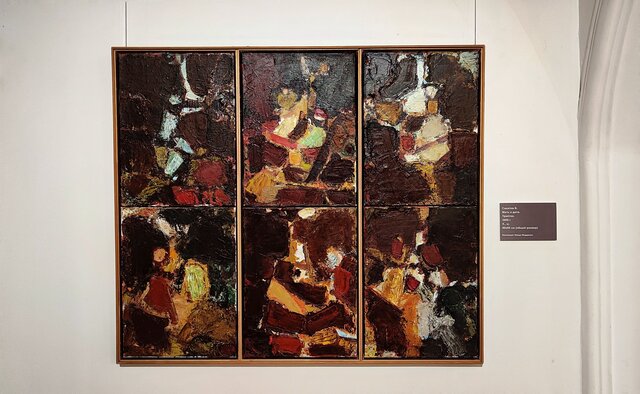What could a traditional Turkmen carpet possibly have in common with a modern non-figurative abstract painting? These two types of art are products of different cultural backgrounds, using different languages of artistic expression. However, when placed side by side in a single exhibit space, these apparently disparate works unexpectedly enter into a dialogue with one another. This visual harmony was the theme of the exhibition, which brought together ancient Turkmen carpets and paintings by Moscow artist Valery Sakhatov.
The designs of Turkmen carpets, filled with both hidden and apparent magic, allow viewers to see the world's images as they are formulated within them, as well as the logic of their perception and reverence, often intuitively, for the sublime and divine. At the same time, talented avant-garde paintings, speaking to us through an ancient and timeless language of lines and colours, lift us above the mundane and encourage us to discover in the works of contemporary artists ideas and images that connect them with the past.
It was this vision of a profound connection that inspired the organizers of the exhibition to bring together in a shared exhibition space ancient Turkmen rugs from the collections of the Mardjani Foundation and Vladislav Velikzhanin, abstract canvasses by the Moscow artist Valery Sakhatov, and modern rugs woven based on his works. In this exhibition, painting and rug become participants in a unified process, partners in a dialogue, a shared visual wave stretching from antiquity to the present day.
The exhibition showcases a diverse range of traditional Turkmen carpets that have accompanied the nomadic people throughout their lives. From childhood, children learned about the world through the entrance curtains of yurts, known as "ensi". In their youth, they saw their identity within the tribe through the carpets of "khala", used for bedding, and "chuval" wall bags. For weddings, families would weave strips of "iolam" carpets. In religious settings, prayer carpets, known as "namazlik," were used, and memorial carpets, called "ayatlik," accompanied individuals on their final journey. These carpets are displayed on canvasses and walls, presented as works of art on par with abstract paintings, allowing the viewer to transcend their utilitarian purpose and appreciate their true significance.
The designs of Turkmen carpets, filled with both hidden and apparent magic, allow viewers to see the world's images as they are formulated within them, as well as the logic of their perception and reverence, often intuitively, for the sublime and divine. At the same time, talented avant-garde paintings, speaking to us through an ancient and timeless language of lines and colours, lift us above the mundane and encourage us to discover in the works of contemporary artists ideas and images that connect them with the past.
It was this vision of a profound connection that inspired the organizers of the exhibition to bring together in a shared exhibition space ancient Turkmen rugs from the collections of the Mardjani Foundation and Vladislav Velikzhanin, abstract canvasses by the Moscow artist Valery Sakhatov, and modern rugs woven based on his works. In this exhibition, painting and rug become participants in a unified process, partners in a dialogue, a shared visual wave stretching from antiquity to the present day.
The exhibition showcases a diverse range of traditional Turkmen carpets that have accompanied the nomadic people throughout their lives. From childhood, children learned about the world through the entrance curtains of yurts, known as "ensi". In their youth, they saw their identity within the tribe through the carpets of "khala", used for bedding, and "chuval" wall bags. For weddings, families would weave strips of "iolam" carpets. In religious settings, prayer carpets, known as "namazlik," were used, and memorial carpets, called "ayatlik," accompanied individuals on their final journey. These carpets are displayed on canvasses and walls, presented as works of art on par with abstract paintings, allowing the viewer to transcend their utilitarian purpose and appreciate their true significance.
Organizers and participants
LLC AOST-implementation, The Mardjani Foundation, All-Russian Museum of Decorative, Applied and Folk Art
 Mardjani Foundation
Mardjani Foundation













